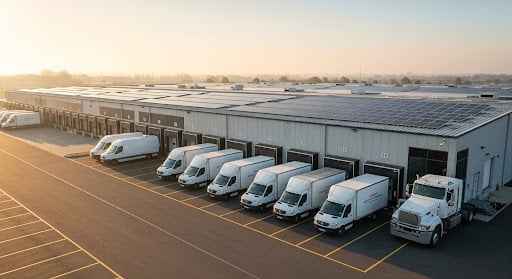Fleet Vehicle Management: Best Practices to Optimize Your Operations
Fleet vehicle management isn’t just about keeping a set of vehicles on the road—it’s about running a smarter, safer, and more efficient operation....
Keep an eye on the road
Simplify your driver's routine
For efficient decision making
Ensure the compliance of your fleet
Simplify the daily life of your drivers
Maximize the value of your data
Unparalleled monitoring of your assets
The friendly competition that pays off
Planning powered by data
Exceed your customers' expectations
Provide better service to your users
Maximize the satisfaction of your citizens
Simplify your daily life on the construction site
Facilitate the electrification of your fleet
Our experts meet your needs
Easily meet the standards
Improve the safety of your drivers
Protect your data and your fleet
2 min read
![]() Alexandre Lampron
Nov 29, 2022 11:07:30 AM
Alexandre Lampron
Nov 29, 2022 11:07:30 AM

A Geotab analysis of traffic at all Canada-U.S. border crossings reveals that there has already been an impact on trips and wait times due to COVID-19. However, the impact is less than expected, meaning the goods needed for business and essential supplies continue to flow between the two countries. The Geotab Data & Analytics team looked at anonymized data from connected commercial vehicles crossing the border over the past several weeks.
The World Health Organization has officially declared COVID-19 a pandemic after confirming the virus is in at least 190 countries and territories. As the situation continues to evolve day-by-day, government officials across the globe have started to take drastic measures to slow down the spread of this infectious virus.
With mutual consent, Canadian Prime Minister, Justin Trudeau and U.S. President Donald Trump made the decision to temporarily close the border between the two countries for all non-essential travel as of March 20, 2020 for all. Trucking services related to trade and supply as well as crossings of emergency and essential workers are allowed to continue.
Fleet managers and drivers are still working to complete jobs even while cities across North America are declaring states of emergency. Below are graphics that illustrate the overall impact COVID-19 is having on truck activity at the border.

Although many fleets are still working to deliver essential goods and keep segments of the economy running, overall truck volume at the border has started to decrease slightly. While there were increased wait times overall through the week of March 15, wait times have been decreasing and stabilizing since then.
At the Detroit-Ambassador Bridge, Port Huron, Lewiston and Buffalo border crossings, the general trend shows that the number of trips decrease starting on Saturday, March 14 and continue to decrease in the following week — around the same time as confirmed cases were increasing in the U.S. and Canada and both governments started to promote social distancing and implement other health-related measures. The most pronounced decrease in volume has been through the Detroit-Ambassador Bridge crossing.

A closer look at the Detroit-Ambassador bridge shows a significant decline in crossing volume. As of Monday, March 23, the volume is 50 percent of normal and continues in a downward trend. While the wait time at the border saw an increase from March 6-13, it appears to have returned to normal levels as of March 16, despite the extra screening and precautions being taken to slow the spread of COVID-19. While there has been a primarily demand-side reduction to trade, the essential goods needed are continuing to flow without any major disruptions or backlogs at the border.


Conclusion
With the U.S. and Canadian government committing to keeping the border open for trade, there appears to be a clear indication of demand-side reduction in cross-border transit. However, for the demand that there is, trade continues to occur, as we still have 75 percent of normal truck traffic across all border crossings.

Fleet vehicle management isn’t just about keeping a set of vehicles on the road—it’s about running a smarter, safer, and more efficient operation....

Let’s face it—running a fleet today isn’t as simple as keeping track of vehicles on a map. The expectations are higher, the pace is faster, and the...

By Anthony Mainville, CEO - Attrix Technologies. If there was one panel that cut through the aspirational rhetoric at ACT Expo 2025 to deliver...